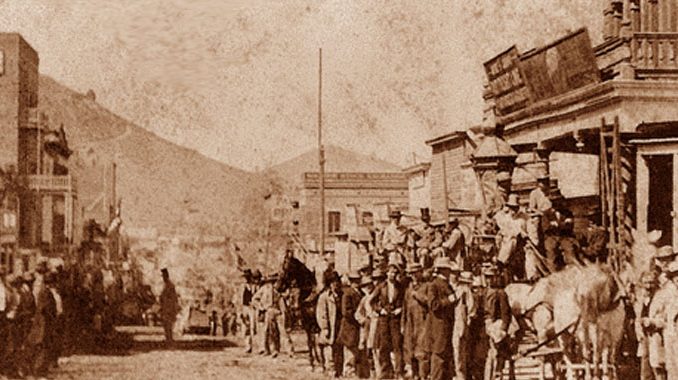
The Comstock Lode was an oddity no matter how you look at it.
In the first place, early miners kept cursing the riches they found there. It fouled their equipment, and they tried desperately to dispose of the gluey, gummy stuff. They were hunting for gold, you see, and what the Comstock had to offer was silver– a sticky blue paste that kept mucking up their sluices and rockers. The prospectors literally tossed away fortunes in silver while scrabbling for a paltry handful of gold.
In the second place, what silver there was– and there was a lot of it– was not distributed in the ground the way silver was supposed to be. Experienced miners knew that silver occurred in continuous veins, winding ever deeper into the matrix. Except… the silver in the Comstock Lode was found in concentrated and widely separated deposits, “like raisins in a plum pudding” as one author described it. So a working could be in rich ore one day, barren dirt the next.
And unlike most of the other Western mineral booms, the Comstock Lode continued to produce rich ore for decades, albeit in fits and starts as one “raisin” after another was located, exploited, and exhausted. It was this random reinforcement that kept miners tunneling away long after the last deposit had been found. In the end, the fruitless search for yet one more “bonanza” cost the miners nearly everything they had taken out of the ground. It was a gamble for high stakes, but the house odds favored Mother Nature.
And last but not least– the main beneficiary of the Comstock wealth was not the Comstock itself. It was the city that provisioned the miners, the tiny village of Yerba Buena that grew into the metropolis known today as…
San Francisco.

Be the first to comment